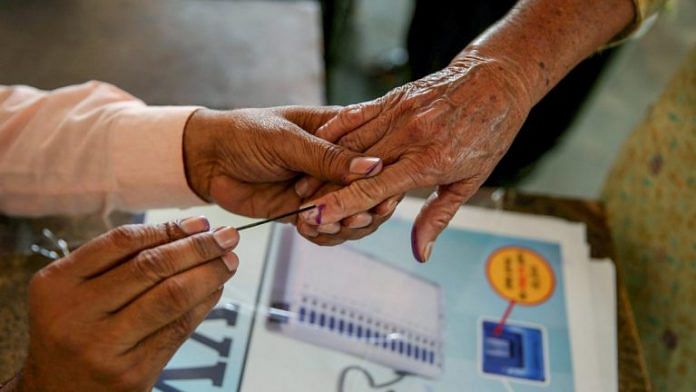In a muddled situation where the bravest psephologist won’t predict anything more than a whole range of uncertainties for this election, let me stick my neck out and underline some certainties. But no, even I will not be so foolhardy as to predict who the next prime minister will be.
The first certainty is that this election will confirm a trend that began five years ago in our politics that performance pays. In these past five years, anti-incumbency has gone down from almost 70 per cent to 46 per cent. And nothing about this voter behaviour is irrational. No government that performed has been voted out due to sheer voter contempt or arrogance. On the contrary, those that performed have been re-elected. Similarly, no non-performing government has been re-elected just because of its communal, caste or ideological appeal. This election will re-affirm this as a welcome, new trend for the coming years.
What this means is that leaders who have delivered governance will get the numbers. Nitish Kumar in Bihar, Narendra Modi in Gujarat, Hooda in Haryana, Sheila Dikshit in Delhi, Shivraj Singh Chouhan and Raman Singh in Madhya Pradesh and Chhattisgarh, respectively, will be nearly unassailable, whatever the coalitions or forces arrayed against them. Even Y.S. Rajasekhar Reddy, who faces an unprecedented TDP-TRS-Left alliance in a three-way contest with Chiranjeevi as spoiler, will avert the disaster that you would normally have predicted, just because his government is seen to have delivered in cities as well as villages and also in the war against Naxalites.
Also read: With more ex-allies than current ones, how BJP has transformed India’s national politics
Similarly, the Left will be punished severely in both West Bengal and Kerala. In one, they have a chief minister incapable of functioning in the 21st century; and in the other, their own ideological contradictions have mortally damaged one of India’s best chief ministers. In neither of the two states are they campaigning on their performance. In Kerala, theirs is a muddled ideological appeal. In West Bengal, they seek a vote to keep Mamata Banerjee out. This is not an election for negative campaigns, as even the Akalis will learn in Punjab. They have run a lazy, outdated government and bankrupted the state. Even the revival of the anger of 1984 will not do the trick for them. The state that needs watching is Maharashtra. By all accounts, the Congress-NCP government’s performance there has been dismal. But the BJP-Shiv Sena challenge there is not yet convincing enough to harvest this voter mood fully. So, another near-certainty is that Maharashtra would buck this performance test. The related certainty, however, is that the larger outcome of this election would depend on whether India’s second largest state (in terms of Parliament seats) bucks the performance test or not.
The next thing you can say for sure is that the nature of this next coalition will be determined not so much by who can go with whom, as by who will, or cannot, go with whom. Let’s try to simplify this. Whichever opinion poll may be correct, the BJP and its like-minded NDA will get, including Shiv Sena and the Akalis, at least 150 seats or thereabouts. These can never join a Congress-led or a third front-type secular coalition. Similarly, the Congress and several third- and fourth-front constituents (Left, SP, RJD, Muslim League), who need the Muslim vote or have an aggressive secular core, will never go with the NDA. So this takes another 250 or so MPs out of the equation. The endgame therefore will be played among the remaining 150. And how does that cookie crumble?
At least 50 or thereabouts out of these will have limited flexibility. Sharad Pawar’s NCP, Mamata Banerjee’s Trinamool and Naidu’s TDP will see a future downside in aligning with the BJP, but at a pinch they could. It will be slightly more complicated for Naveen Patnaik’s BJD and TDP to go with the UPA as the Congress is their main rival in their power bases. This will further restrict the overall mobility within this decisive group of 150.
Also read: BJP’s victory in Tripura will force Left to rethink its alliance with Congress for 2019
The key, therefore, will be the 100 or so who could move either way and that is where the real complications will come. If the Left decides to support a Congress coalition, for example, the numbers they bring will be netted off against Mamata Banerjee, since she will most certainly move out. Similarly, even if the Third Front does brilliantly, there will be no way they could get the numbers from other secular parties like the SP, DMK and Trinamool, as they cannot co-exist with the BSP, AIADMK and Left, respectively their mortal enemies. So any coalition will get only one of each of these sets of rivals. This will diminish the net numerical power of all these parties.
Now we come to our final set of certainties. First, whichever coalition comes to power, Ramadoss, Paswan, Kumaraswamy (junior Gowda) and Ajit Singh will be in its cabinet. These fortunate men represent the phenomenon of total ideological fungibility, as they will share power with any of the three possible combinations. They will also pretty much have their pick of what can only be described as ATM ministries. Each of these will have just a few seats, but total political mobility.
And finally, without the benefit of any opinion poll, you can most confidently predict the fate of all the smart, new uppercrust independent stars of this election. For convenience, let’s describe them as candidates of the Cocktail Party. It is one thing to rabble-rouse at politician-bashing chat shows, but it will take more to turn the tables on the political class than chief executives of failed banks or airlines. So the TV chat show class of independents forfeiting their deposits is the final certainty.
Also read: Coalition dharma rewrite: Winner takes all






